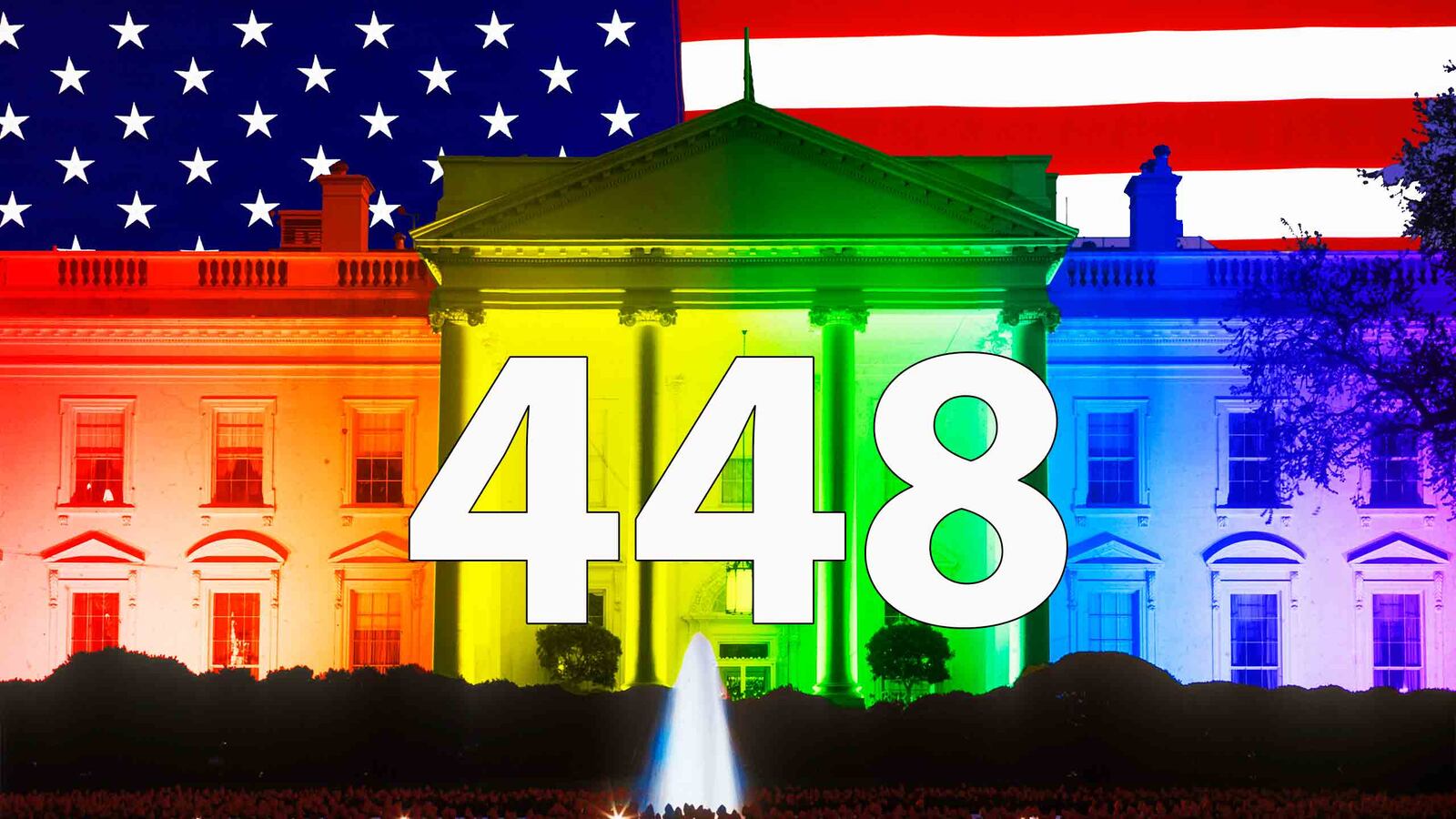LGBT candidates won big on election night 2017, with an unprecedented flurry of wins for transgender candidates in particular.
But according to a new report from the Victory Institute, which works to elect LGBT people to public office, political parity is a long way away: 21,307 seats away, to be exact.
Only then will the percentage of LGBT elected officials line up with the 4 percent of American adults who identify as LGBT, according to a recent Gallup estimate.
The most striking finding in the Victory Institute report is that only 0.1 percent of elected officials are LGBT. That means there would need to be nearly 50 times more openly LGBT elected officials—including three more senators, 12 more members of the House of Representatives, and over 21,000 other officials—before federal, state, and local governments fully reflect the population.
The report, released today, provides the most comprehensive overview to date of LGBT political representation in the United States, from the Senate all the way down to the local level.
Previously, the Victory Institute has given an offhand estimate that there are “about 500” LGBT elected officials in the United States. Now, they have a more exact number: 448, which includes Wisconsin Sen. Tammy Baldwin, six members of the House of Representatives, 109 state legislators, two state executives, and one large-city mayor, with the remainder spread across various local offices.
However, not all aspects of the LGBT community are being equally represented. A majority of those 448, per the report, are “white cisgender [i.e., non-transgender] gay men.”
Even though bisexual people have been estimated by the Williams Institute to constitute a “slight majority” of the LGBT population in the United States, there are only eight openly bisexual elected officials in the country, compared to 257 gay elected officials and 168 lesbian elected officials.
As of Nov. 1, there are only six openly transgender elected officials who are currently serving—but after election night 2017, when Danica Roem won her history-making Virginia House of Delegates race and several other transgender candidates clinched their bids for local office, that number stands to rise further.
And nearly 80 percent of the legislators in that group of 448 are white: 356 elected officials, as compared to 51 Hispanic elected officials, 23 black elected officials, and even fewer Asian/Pacific Islander elected officials.
By contrast, people of color are in fact more likely than white people to identify as LGBT, according to the latest Gallup findings, and now comprise an estimated 40 percent of the adult LGBT population.
“The severe underrepresentation of LGBTQ people in elected positions—especially for LGBTQ people of color and transgender people—is an urgent call to arms for LGBTQ leaders to run for office and be our voices in the halls of power,” said Victory Institute President Aisha C. Moodie in a press release accompanying the report, adding that more LGBT political representation “leads to more inclusive legislation.”
Indeed, according to the report, 13 states have no LGBTQ elected officials, and all but two of them, Hawaii and Delaware, are ranked as “low-equality states,” meaning they have minimal legal protections of LGBT people and, in some cases—like Mississippi—have explicitly anti-LGBT laws.
Conversely, as the report notes, “all but four states with three or more LGBTQ state legislators are states with higher levels of equality for LGBTQ people.” And there is evidence that this correlation speaks to an underlying causality.
A 2013 analysis in the American Political Science Review by UNC Chapel Hill political science professor Andrew Reynolds found that “even a small number of openly gay legislators is associated significantly with the future passage of enhanced gay rights,” and that LGBT lawmakers tend to have “a transformative effect” on their colleagues’ “voting behavior.”
“This article indicates that making even small gains in winning elective office pays large dividends in social and legal progress,” concluded Reynolds. “This finding suggests that groups that promote, train, and provide resources to openly LGBT candidates (regardless of political affiliation) are on the correct track if they wish to see equalization of the law when it comes to sexual orientation and civil rights.”
In other words, although public opinion tends to influence legislation, openly LGBT lawmakers can have a substantial impact on legislative bodies from within, whether they are Democrats or Republicans.
The Victory Fund—the Victory Institute’s partner organization—has indeed endorsed Republican LGBT candidates, perhaps most notably Jim Kolbe, a former Arizona congressman who came out in 1996 and became known as “the only openly gay Republican in Congress.”
However, given the official GOP platform on LGBT issues like same-sex marriage, conversion therapy, and “bathroom bills”—and given the fact that a clear majority of LGBT Americans identify as Democrats and perceive the Republican Party as “unfriendly”—it’s perhaps no surprise that just under 77 percent of the openly LGBT elected officials counted in the Victory Institute report are Democrats.
Only 19 LGBT elected officials in the United States are affiliated with the Republican Party.
But given that there are currently an estimated 519,682 elected officials overall in this country, that leaves plenty of room for LGBT political representation to expand and become more diverse.
“Representation is power,” the report notes, “which is why we need more of our people in elected office, and why we must encourage our community members to run for office and win.”






